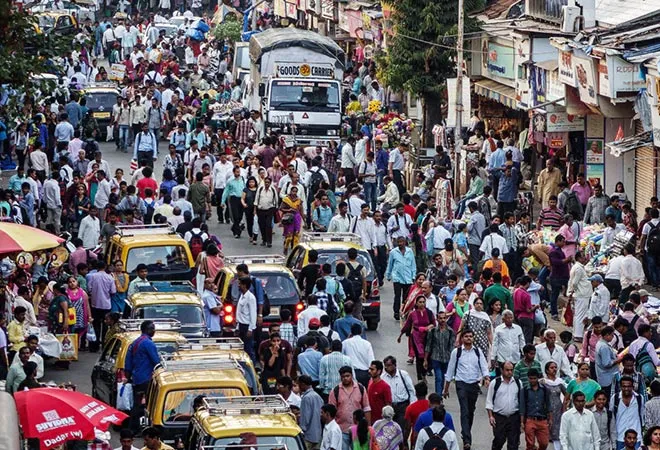
Images of informal migrants walking for several days without food and shelter, to run away from their crummy homes in unhygienic slums in metros like Mumbai and Delhi, has highlighted the lack of equity, dignity and livability in the urban planning process. Historically, it is diseases that have shaped cities; and it is ironic that a disease like COVID-19 is reflecting how far we have moved from holistic urban planning for the masses. Post-COVID, cities must revisit city plans, and look at poverty planning with a mandate to enhance affordable housing for the poor and public health.
When Mumbai was hit by the plague between 1896-1899, it formed the Bombay Improvement Trust (BIT) to build sociable and equitable spaces beyond what is now South Mumbai. Similarly, the Delhi Improvement Trust (DIT) was constituted in 1937 to take on projects of ‘re-housing’ for poorer residents and provide more equitable housing in the city’s outskirts. Globally, many systems including the London’s Metropolitan Board of Works and mid-19th century sanitation systems, developed in response to cholera outbreaks.
Urban experts have pointed out that there has been a considerable shift in the approach of urban planning post the 1990 financial reforms. Cities were looked at as engines of growth, and there was a thrust on creating a more economy-led infrastructure. To begin with, let us consider few aspects of poverty planning of cities – housing, employment and health planning for the poor.
In case of housing, the planning statutes do not leave space for affordable housing for poor. There is no updated survey or inventory on the number of people, where they live or work, and housing records remain informal. The plans depend on the last census — which takes place every 10 years — and can be a very poor parameter for planning ahead for the next 20 years. This has posed huge problems for authorities during the pandemic when informal migrants wanted to move back to their villages, but a lack of information led to chaos.
Terms like Transit Oriented Development (TOD), which is planning for high-density development along transit nodes, and Floor Space Index (FSI), which talks of the total area you can build on a plot, remains the focus of urban plans. These terms do not include aspects of welfare.
Affordable housing is largely left to market forces and thus, poor people scout for spaces that are available for squatting and give growth to informal housing. The cost of reserved land is very high making affordable public housing actually unaffordable for the poor sections. Also, the powers given to parastatal agencies for planning in several municipal functions, leaves such vulnerable areas out of city plans. For example, in Mumbai, slum areas fall under the Mumbai Metropolitan Regional Development Authority (MMRDA) or the Slum Rehabilitation Authority (SRA), thus leaving these areas — which comprise of over half of the population — out of city planning by the Mumbai civic corporation.
Additionally, while hawking is an important avenue for employment for the poor, the statutes do not include it in city development plans. Separate town vending committees are set up to demarcate hawking zones and spots, due to which they effectively remain outside the municipal planning processes. The dynamic nature of such employment, where hawking spots change according to new transport infrastructure and housing zones, does not go in tandem with the development plans that are rigid and for a 20-year period. To fix this issue of static planning, the Delhi Masterplan is now a continuously emerging dynamic plan, where there is scope to accommodate new developments in reservations for transport, housing and commercial markets which impact hawking activities.
In case of planning for public health, the Twelfth Schedule of the Indian Constitution lists preventive healthcare and public health as mandatory duties of the municipal corporation. This means that urban local bodies have to plan for them both spatially and through budgets. While plans reserve land for creating health infrastructure, a lot remains on paper since hardly 30 percent development plans are implemented in urban areas. Also, city plans are not made focal to annual budgets of cities, and one observes this in case of the Mumbai municipal corporation. It runs major hospitals with medical colleges and peripheral hospitals, and only 13 percent of the total municipal budget of INR 33,400 crore was allocated for health, where only seven percent went towards creating assets (capital expenditure) — causing health amenity deficit.
The transparency committee report of the Maharashtra Government, put together for better functioning, states that ‘the health facilities of many cities draw a large number of patients from outside the city. This puts pressure on the city’s health infrastructure. In the backdrop of certain preventive health services that municipalities must perform and are not performing too well, a call needs to be taken on the desirability of stepping into domains best carried out by the state’.
All the above examples finally lead to a larger conclusion on the imbalanced growth planning, and an impoverished population that has been left on the periphery. COVID-19 has forced us to look at these imbalances closely and scamper for solutions that may be drastic and disruptive.
Some of the urgent measures cities will have to consider are:
- Urban plans will need to turn tables and plan for lesser people and cap populations like in Shanghai and Beijing
- The traditional methods of planning will need to be replaced by livability as a criteria
- Any kind of growth or reservations, which are anti-poor will need to be disincentivised
- Poverty and welfare will need to be a top planning priority, with population surveys done
- Change statutes to allow municipal corporations to plan for the entire city, even if the development of certain areas fall under parastatals
- Enhance municipal budgets, and like South Africa and Brazil, bring in ‘equalisation grants’, or decentralise budgets from the central government to create adequate health and other infrastructure for the poor
Is it time that we start looking at measures like population capping and enhancing municipal budgets seriously if we want to build equitable cities.
The views expressed above belong to the author(s). ORF research and analyses now available on Telegram! Click here to access our curated content — blogs, longforms and interviews.




 PREV
PREV


